- Home
- Alison Weir
Queens of the Conquest Page 17
Queens of the Conquest Read online
Page 17
3
“A Matter of Controversy”
It seemed that there remained no obstacle to Edith’s marriage going ahead. But now Christina spoke out. She protested that her niece was a veiled nun, and that it would be an act of sacrilege to remove her from her convent.1 Because it was known that Edith had been brought up from early childhood in a convent and grown to womanhood there, many believed that she had been dedicated by her parents to God’s service, as she had been seen walking around wearing a nun’s veil. And when it became known that the King was about to “advance her to his bed,” this became “a matter of controversy.”2 When it was seen that Edith had discarded the veil, tongues began wagging. This proved an obstacle to the couple marrying and “embracing one another, as they desired,”3 for the King realized that it would be unwise for him to join himself with a woman who was widely believed to be a nun. The matter must be settled, for the sake of the salvation of them both, and for the future security of the succession.
Immediately, Henry recalled Archbishop Anselm, whom Rufus had driven into exile. He asked the renowned Anselm to rule on whether or not Edith was free to marry. Anselm arrived in England in October 1100 and wasted no time in advising the King not to wed her because he had been reliably informed that she was in truth a nun. Henry protested that he had promised to marry her and had even sworn to do so on oath to her father.4
Henry must have informed Edith what the Archbishop had said. “Accordingly, as all were looking for a sign from Anselm on this question,” she took the initiative and herself traveled from Wilton to see him at Salisbury, where she humbly sought his advice and help.5
What transpired at their meeting was recorded by Eadmer, whose account was written to counter later criticisms of Anselm’s handling of the case. The Archbishop made it clear to Edith at the outset that he had grave doubts that she was free to wed. He warned her “that he was not to be induced by any pleading to take from God His bride and join her in marriage with an earthly husband.”
Edith protested that she had been sent to Wilton only to be educated, and that her parents had never intended her to be a nun. She denied “absolutely that she had been so dedicated” or “had ever at any time been veiled with her own consent, and declared that, if it was necessary to convince him, she would prove it at the judgement seat of the whole English Church.” She told Anselm how her aunt Christina, whom he knew quite well, had tried to make her wear the veil, and how she had rebelled. “In that way, and only in that way, I was veiled, as my conscience bears witness,” she insisted. “That is my answer to the slanders which are spread abroad about me. This I ask your wisdom to consider, and do for me as your fatherhood knows should be done.”6
Anselm would not give a ruling himself. He “declared that the case ought to be determined by the judgement of the chief persons of religion in the kingdom. So, at his bidding, on the appointed day, the bishops, abbots and all the nobles and leading men of the religious profession assembled on the Surrey shore of the River Thames near London, in a manor house at Lambeth.7 In due order, the case was brought up for discussion. From various sources, credible witnesses came forward, declaring that the simple truth supported the girl’s story.”8 They swore she had worn the veil to protect her from unwanted suitors, but had never made her vows.9
Just to be certain, Anselm had sent two archdeacons, William of Canterbury and Hambald of Salisbury, to Wilton Abbey. They declared before the whole assembly that they had made most careful inquiries of the sisters, and that they had not been able to gather from them anything at all which was inconsistent with the account given by Edith.10
Warning that “the matter should be rightly decided” so that God was not defrauded of what was justly His, Anselm withdrew so that the bishops could consider without “fear or favour” what judgment should be given. There was much discussion about Archbishop Lanfranc approving of women wearing the veil to avoid rape, from which it is clear that it had become a common practice. Lanfranc had ruled that those who had hidden in nunneries after the Normans invaded were not bound by any vows and could not be forced to become nuns against their will; they must be afforded “unrestricted leave to depart.”11
The bishops took the view that Edith had worn the veil under compulsion, and when Anselm returned, they gave their opinion: “Under the circumstances of the matter, it seemed to them established that the girl could not rightly be bound by any decision to prevent her being free to dispose of her person in whatever way she legally wished.”12 Only now was Anselm “induced to consent to her marriage.”13 He accepted the judgment of the bishops, “with all the more confidence as I am told that it is supported by the authority of so great a father” as Lanfranc, and Edith was summoned before the assembly. Calmly she listened to an account of the proceedings, then petitioned that she might make a brief statement. “She offered to prove by oath that her story was in accordance with the real truth of the matter. This she declared that she would do, not as thinking that they did not believe her, but to cut away any opportunity for ill-affected persons to utter any scandal in the future.” They replied that there was no need for any such thing. The Archbishop ruled that she “had proved that she had not embraced a religious life, either by her own choice, or the vow of her parents; and she was therefore free to contract marriage with the King.” Dismissing her, he said he regretted to see one who might have been God’s bride placed in a carnal bed. Nevertheless, having obtained Anselm’s blessing, Edith departed “with a happy face,”14 and would always remain devoted to the man who had made her marriage possible.
Herman, Abbot of Tournai, later claimed that, as a young monk, he had discussed the case with Anselm, although he would have been nineteen at most when Anselm died. Nevertheless, he stated that the Archbishop had said that no good would come of the marriage. It was not in dispute that Edith had often worn the veil, and surely, he declared, the King could have found an unencumbered bride among the daughters of kings and counts. Anselm had said as much to Henry, begging him not to wed Edith. “England will not long rejoice in the children she will bear,” he warned.15
4
“Godric and Godgifu”
The wedding took place “a few days later”1 at Martinmas, the feast of St. Martin of Tours, which fell on Sunday 11 November 1100, when Edith was given to Henry “with great honour” at Westminster Abbey,2 with Archbishop Anselm officiating.3 “When this union was due to be made and established in accordance with the ritual of the Church, and all the nobility of the realm and the people of lesser degree were come together for this ceremony and were crowding around the King and the maid in front of the doors of the church, Father Anselm himself, standing raised up above the crowd, instructed them all how the girl’s case, about which there had been so much talk, had been inquired into and determined by the bishops. He then, on divine authority, charged them that, if anyone was aware of anything contrary to the judgement, so that it could be shown that, according to Christian law, this union ought not to be made, he should, without any hesitation and without incurring the displeasure of anyone, openly declare it. At this they all cried out with one accord that the matter had been rightly decided, and that there was now no ground on which anyone, unless possibly led by malice, could properly raise any scandal. Thereupon the pair were joined together in lawful matrimony with the dignity befitting a king and queen,” and Anselm gave them his blessing.4
Eadmer concluded his account with this skeptical observation: “So there I have described the girl’s story without asserting whether it was true or not.” Yet it is hardly likely that Anselm would have allowed the marriage to go ahead if there was any room for doubt. Even so, a germ of skepticism remained, as will become clear, and in the thirteenth century the chronicler Matthew Paris would lambast Edith as a professed nun who had brought a curse on her descendants.
At the door of the abbey, as the couple emerged, Henry paused and formally settled on Edith a dower that made her one of the richest magnates in England.5 It
comprised most of the lands held by Edith of Wessex. Although few details survive, we know that Henry gave his bride lands in the north, and extensive holdings in the City of London, the rights to dues and taxes from Exeter, Winchester, Rockingham and much of the county of Rutland, and several abbeys, including Malmesbury, Barking (which dated from the seventh century) and Waltham.6 She also received at least one manor that had been owned by, or confiscated from, her father’s killer, Archil Morel. That the dower was substantial is suggested by the fact that, soon after becoming queen, Edith was exercising extensive patronage.7 Also on the wedding day, Henry issued a charter to Abingdon Abbey, which was to become one of the new Queen’s favored religious houses and would enjoy her bounty.8
It is often said that, to make his Queen more acceptable to the Norman barons, Henry insisted that she change her name to Matilda, in honor of his mother, her godmother. It has also been suggested that Edith was given Matilda as a baptismal name by Robert Curthose or Matilda of Flanders, but that she did not use it until she lived in England.9 It would make sense that, in the interests of reconciling the Saxon and Norman peoples, a queen with Saxon blood would agree to adopt a Norman name; or that, having lived in evident fear of predatory Norman suitors, she had already chosen to abandon her Saxon name, hoping that they might approach a woman with a Norman name more respectfully. Chroniclers would call the new Queen “the second Matilda”; like the first, she set an example of devout queenship that would be emulated by her successors.10
On 14 November, Edith—or Matilda, as she was now known—was consecrated queen and crowned by Archbishop Anselm.11 She prostrated herself before the altar before her anointing, and a ring was placed on her finger. The prayers offered up made reference to Old Testament heroines: Judith, who decapitated the fearsome Holofernes and saved her people from war; Sarah, who was fruitful in her old age; Rebecca, who was brave, resourceful and wise; Rachel, who was loved enduringly by Jacob; and Esther, who delivered the Jews from persecution—as the Saxons doubtless hoped Matilda would deliver them from Norman oppression. The message was clear: these were the virtues embodied by, and expected of, the new Queen.12
At the coronation of Matilda of Scotland, a verse was recited recalling a prophecy of Edward the Confessor that “the green tree” of the old royal line would be re-grafted and England’s ills would cease:13
Now by the tree is set the root,
And like to bear both flower and fruit.
The tree, ye may well understand,
To be the kingship of England;
The root, ye trow, is King’s seed,
Whereof our kings should come indeed.
Now gotten hath the tree the root,
And like to bear both flower and fruit:
Dame Matilda, our Queen and lady,
That wedded is with King Henry.14
This theme is echoed in a later work, Le Livere de Reis: “And the tree returned to its trunk, when she, who was of the lineage of Alfred, was made queen of England.”
Since before her marriage, Matilda of Scotland had corresponded with the venerable scholar and poet Hildebert of Lavardin, Bishop of Le Mans, whom she may have met when he visited England in 1099. To mark her nuptials, he composed Latin verses congratulating King Henry and England on the possession of a doubly royal bride. He extolled Matilda’s virtues, and the way her modest and maidenly deportment enhanced her charms, as, “with blushes redder than the crimson of her royal robe, she stood at the altar invested with her royal insignia, a virgin queen and bride, in whom England’s hopes hailed the future mother of a mighty line of kings.”
This undated homily may have been a reminder not to let all the adulation blind her to the fact that she was mortal: “Among the wealth and delights and favours of the people, let the spirit take this in: let your tongue sound this: Death equates the lord to the servant, the sceptre to the bonds, drawing the dissimilar to a similar condition.”15
Yet Hildebert himself contributed to the adulation in another panegyric written soon after Matilda’s coronation:
Daughter of a past king, wife of a present, mother of a future king, this is special to you. Rarely if ever is a woman found who is at the same time the daughter, wife, and parent of kings. Your nobility did not begin with you, nor will it end with you, but live on after you as it was. You do not dishonour her, revered daughter of a mother who gave birth to you such as she was. Your father had one, you have two kingdoms. The English venerate you as queen, the Normans as countess [sic]: both people as their ruling lady. You do not come to the sceptre raw, birth gave you usage. It is yours to reign, a paternal thing for you. You rule by nature, others by fate; these give you rule, fate gives it to others. Nothing is more powerful than you in the kingdom; nothing as beautiful; everyone is less in religion. You so compose your customs, Queen, and your actions, that there is nothing in them more or less than just. Could you do harm? You do not wish to. Could you take offence? You condone voluntarily. Do you see sorrow? You condole. Do you wish to give? You do not hesitate. To live sparingly? You do not know how. If you speak, the speech has force. If you are silent, it is firm; if you laugh, it is honourable laughter. Do you pray? Mouths are moist with the tears of the praying. Do you fast? You rejoice. Do you eat? Never to satiety. Whatever you do, you have the rein of sobriety. Simplicity adorns your mind within, honesty your face without, graces individually and more together.16
The Christmas crown-wearing at Westminster following the royal wedding was attended by the future Louis VI of France, who sat between the King and Archbishop Anselm at the Yuletide feast. But while the marriage pleased the English, it now became clear that the Norman barons were contemptuous, and that Henry’s plan to bring unity was not immediately successful. During the festivities, “the malice of certain evil-minded men busied itself in inventing the most cutting railleries on King Henry and his wife of English blood.” Behind Henry’s back17 they made racial comments and “openly branded their lord with sarcasms, calling him Godric and his consort Godgifu,” despised names common among the conquered Saxons,18 while Matilda was disparagingly referred to as “the Saxon woman.”19 Initially, acceptance of Matilda by the Normans had more to do with her Scots royal connections than her English ones.20
But gradually, as time passed, some followed their King’s example and took Saxon wives. “By intermarriage, and by every means in his power, he bound the two peoples into a firm union.”21 Within a few years, “English and Normans were living peacefully together in boroughs, towns, and cities, and were inter-marrying with each other. You could see many villages or town markets filled with displays of French wares and merchandise, and observe the English, who had previously seemed contemptible to the French in their native dress, completely transformed by foreign fashions.”22 Integration was a slow process, though. Not until a century after the Conquest could it be said, “It can scarcely be decided who is of English birth and who of Norman.”23
The marriage of Henry and Matilda proved famously successful, one of partnership rather than passion. They “either other loved withouten strife,” which suggests that Matilda did not complain about her husband’s infidelities. Pragmatically she accustomed herself to Henry’s bastards, several of whom were being brought up and educated in his household. One of the eldest, Robert of Caen, born of an unknown Norman mother around 1090, was a special favorite of Henry’s, who took the boy with him everywhere and had him styled “Robert, the King’s son.”
Matilda herself never committed “any impropriety, and with the exception of the King’s bed” remained “completely chaste and uncontaminated, even by suspicion.”24 But it was only by “careful investigation” that she discovered the goodwill in the heart of her husband.25
5
“Another Esther in Our Own Time”
Queen Matilda became “right well loved” throughout England,1 and was often referred to as “the good Queen.”2 One bishop called her “the common mother of all England.”3 She set a sterling example of queenly c
onduct that would long be remembered. Following the example of her mother, she gladly undertook her traditional duties of helping the poor and sick, and interceding for prisoners. Traditionally she has been seen as something of a pious nonentity, but the recent scholarship of Lois L. Huneycutt and others has shown that this was far from the case. Matilda played a prominent political role, unique in the annals of English queens consort. In fact, when asked by her grandson, Henry II, to write about his ancestors, the saintly chronicler Aelred of Rievaulx felt unequal to addressing “the magnitude of the matter” of doing justice to Matilda, who was “another Esther in our own time.”4 It was an image she herself was to cultivate.
Charter evidence shows that she was able to influence Henry,5 and that he relied on her advice. A contemporary assessed her as “not dissimilar to the King in competence.”6 She attended meetings of the King’s Council, although charters testify to her being present on fewer occasions than Matilda of Flanders when the King resolved legal disputes—only rarely does her mark appear on such charters. However, she attested more charters than most other signatories. She issued writs as well as thirty-three charters in her own name and under her own seal, while her signature, as witness, almost always appears immediately below the King’s on sixty-five of the charters he issued during her lifetime; the only exception is a charter granted to the abbey of Saint-Étienne, Caen, where her brothers’ signatures take precedence.7 Her seal survives in the British Library, and shows a full-length figure of a crowned queen holding an orb and scepter. It is the earliest extant example of an English queen’s seal.

 Richard III and the Princes in the Tower
Richard III and the Princes in the Tower Britain's Royal Families: The Complete Genealogy
Britain's Royal Families: The Complete Genealogy The Lady in the Tower: The Fall of Anne Boleyn
The Lady in the Tower: The Fall of Anne Boleyn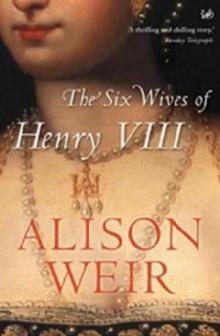 Six Wives of Henry VIII
Six Wives of Henry VIII Elizabeth of York: A Tudor Queen and Her World
Elizabeth of York: A Tudor Queen and Her World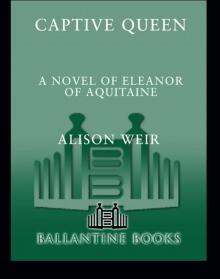 Captive Queen
Captive Queen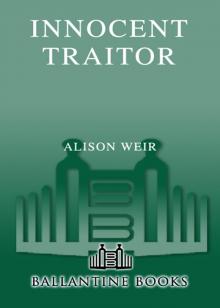 Innocent Traitor
Innocent Traitor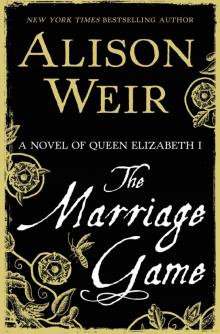 The Marriage Game
The Marriage Game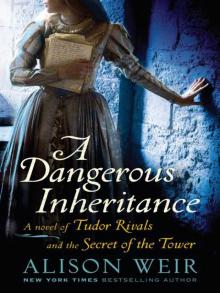 A Dangerous Inheritance
A Dangerous Inheritance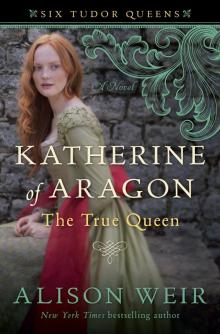 Katherine of Aragón: The True Queen
Katherine of Aragón: The True Queen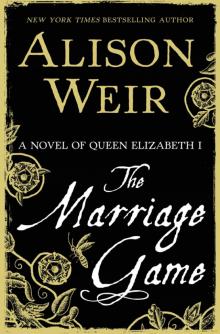 The Marriage Game: A Novel of Queen Elizabeth I
The Marriage Game: A Novel of Queen Elizabeth I Princes in the Tower
Princes in the Tower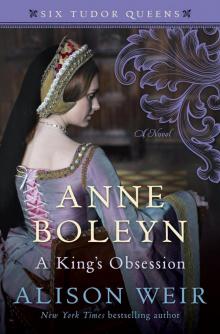 Anne Boleyn: A King's Obsession
Anne Boleyn: A King's Obsession Traitors of the Tower
Traitors of the Tower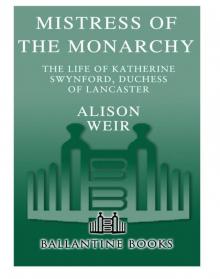 Mistress of the Monarchy: The Life of Katherine Swynford, Duchess of Lancaster
Mistress of the Monarchy: The Life of Katherine Swynford, Duchess of Lancaster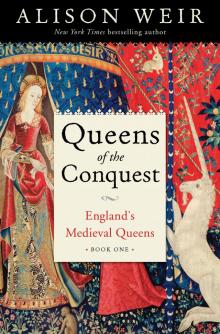 Queens of the Conquest: England’s Medieval Queens
Queens of the Conquest: England’s Medieval Queens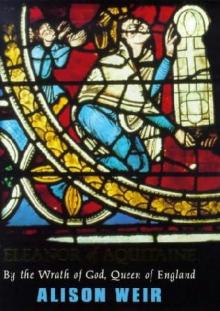 Eleanor of Aquitaine: A Life
Eleanor of Aquitaine: A Life Mary, Queen of Scots, and the Murder of Lord Darnley
Mary, Queen of Scots, and the Murder of Lord Darnley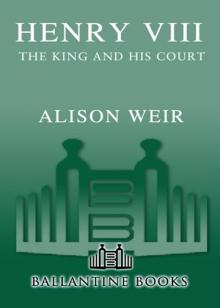 Henry VIII: The King and His Court
Henry VIII: The King and His Court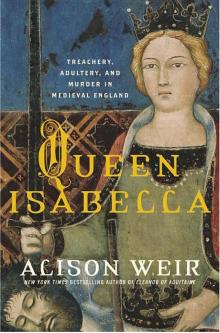 Queen Isabella: Treachery, Adultery, and Murder in Medieval England
Queen Isabella: Treachery, Adultery, and Murder in Medieval England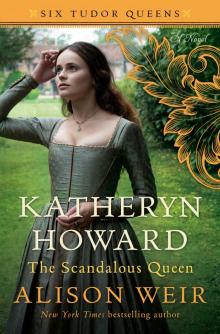 Katheryn Howard, the Scandalous Queen
Katheryn Howard, the Scandalous Queen Arthur- Prince of the Roses
Arthur- Prince of the Roses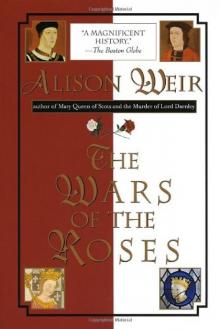 The Wars of the Roses
The Wars of the Roses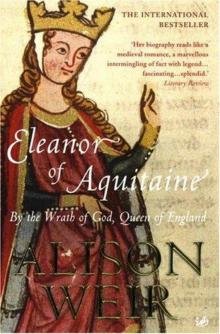 Eleanor of Aquitaine: By the Wrath of God, Queen of England
Eleanor of Aquitaine: By the Wrath of God, Queen of England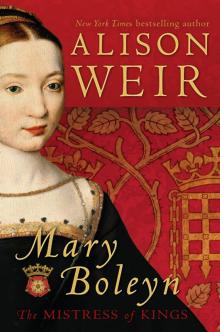 Mary Boleyn: The Great and Infamous Whore
Mary Boleyn: The Great and Infamous Whore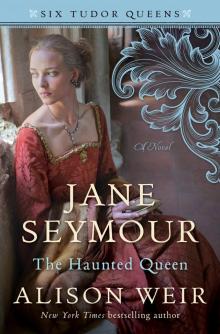 Jane Seymour: The Haunted Queen
Jane Seymour: The Haunted Queen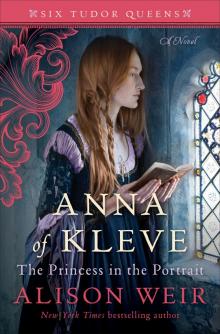 Anna of Kleve, the Princess in the Portrait
Anna of Kleve, the Princess in the Portrait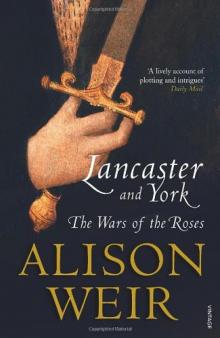 Lancaster and York: The Wars of the Roses
Lancaster and York: The Wars of the Roses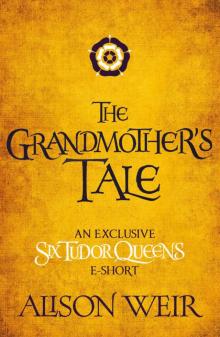 The Grandmother's Tale
The Grandmother's Tale The Princess of Scotland (Six Tudor Queens #5.5)
The Princess of Scotland (Six Tudor Queens #5.5)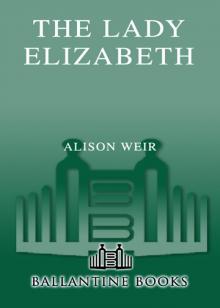 The Lady Elizabeth
The Lady Elizabeth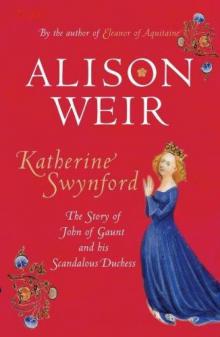 Katherine Swynford: The Story of John of Gaunt and His Scandalous Duchess
Katherine Swynford: The Story of John of Gaunt and His Scandalous Duchess The Curse of the Hungerfords
The Curse of the Hungerfords The Lost Tudor Princess: The Life of Lady Margaret Douglas
The Lost Tudor Princess: The Life of Lady Margaret Douglas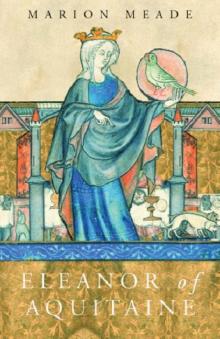 Eleanor of Aquitaine
Eleanor of Aquitaine Mistress of the Monarchy
Mistress of the Monarchy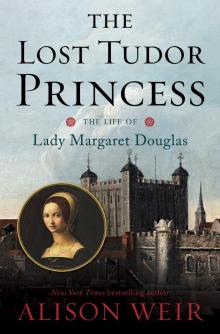 The Lost Tudor Princess
The Lost Tudor Princess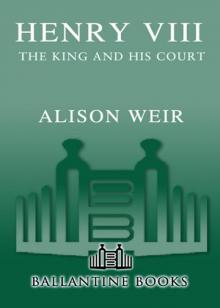 Henry VIII
Henry VIII Anne Boleyn, a King's Obsession
Anne Boleyn, a King's Obsession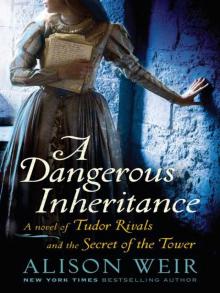 A Dangerous Inheritance: A Novel of Tudor Rivals and the Secret of the Tower
A Dangerous Inheritance: A Novel of Tudor Rivals and the Secret of the Tower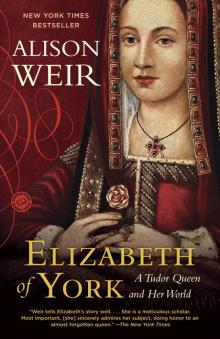 Elizabeth of York
Elizabeth of York Katherine of Aragon, the True Queen
Katherine of Aragon, the True Queen Katherine Swynford
Katherine Swynford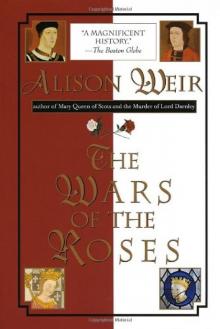 Wars of the Roses
Wars of the Roses Queens of the Conquest
Queens of the Conquest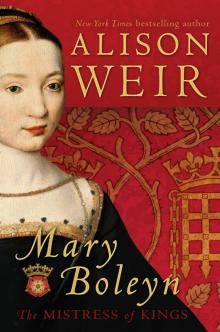 Mary Boleyn
Mary Boleyn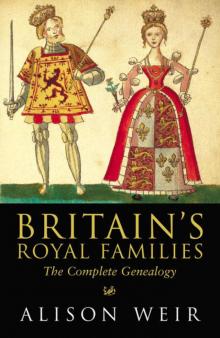 Britain's Royal Families
Britain's Royal Families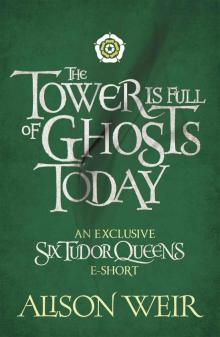 The Tower Is Full of Ghosts Today
The Tower Is Full of Ghosts Today Life of Elizabeth I
Life of Elizabeth I Anne Boleyn A King's Obssession
Anne Boleyn A King's Obssession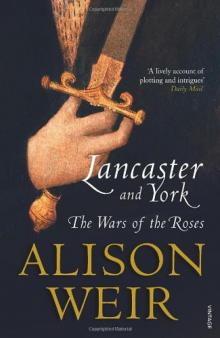 Lancaster and York
Lancaster and York Jane Seymour, the Haunted Queen
Jane Seymour, the Haunted Queen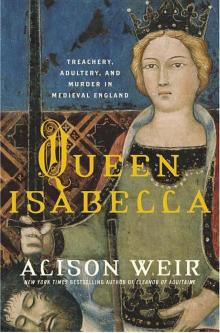 Queen Isabella
Queen Isabella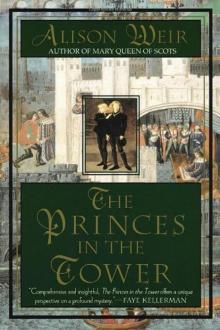 The princes in the tower
The princes in the tower